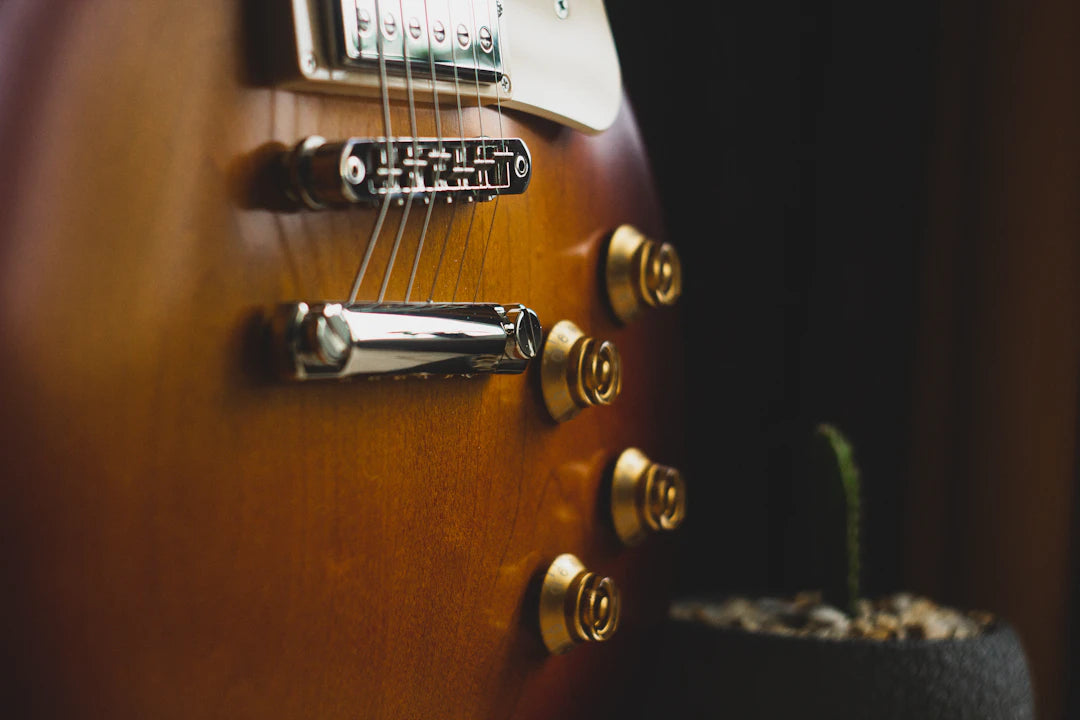Frequently Asked Questions
1. What are guitar pickups?
2. What are the main types of guitar pickups?
3. How do I wire guitar pickups?
4. What materials do I need to wire my guitar pickups?
5. What are custom guitar pickups?
Embarking on the journey of wiring your guitar pickups can seem daunting, especially for beginners. However, understanding how pickups work and how to wire them can greatly enhance your guitar's sound and performance. In this guide, we will delve into the essentials of wiring guitar pickups, provide insights into different types, and help you explore options like a Stratocaster pickup set and custom guitar pickups. Let's get started!
What are Guitar Pickups?
At the heart of every electric guitar's sound lie the pickups. These electromagnetic devices transform string vibrations into electrical signals, which are then amplified to produce sound. Understanding the basics of guitar pickups is essential for any aspiring guitarist or builder. They can vastly influence your tone, responsiveness, and overall playing experience.
Types of Guitar Pickups
There are primarily two types of guitar pickups: single-coil and humbucker. Each type has its distinct sound characteristics and wiring requirements. Let's explore these in more detail.
Single-Coil Pickups
Single-coil pickups are known for their bright and clear sound. They tend to produce a sharper high end, which can make your notes sparkle. However, they can also pick up unwanted noise or interference, especially in electrically noisy environments.
A typical Stratocaster pickup set comprises three single-coil pickups located at the neck, middle, and bridge positions of the guitar. Each pickup can significantly affect your tone, depending on its placement and wiring configuration.
Humbucker Pickups
Humbuckers are designed to cancel out the hum and noise that often accompany single-coil pickups. They have a warmer and thicker sound, making them popular for heavier music styles. Typical configurations include two coils wound in opposite directions, further enhancing the noise-canceling effect.
Understanding Pickup Wiring
Wiring your pickups seems intimidating, but with a clear understanding and some practice, you can achieve great results. Here's a basic overview of the wiring components you'll need to be familiar with:
- Wire Colors
- Connectors
- Volume and Tone Pots
- Toggle Switches
Wire Colors
Most pickup wires come with a specific color code. Typically, the hot wire (signal) is either white or black, while the ground wire is usually black or bare. Familiarize yourself with these standards to avoid confusion during the installation process.
Connectors
Pickups usually come with connectors that can vary in size and type. Ensure that your connectors are compatible with your guitar's wiring harness. Being equipped with the right connectors will make your wiring experience much smoother.
Volume and Tone Pots
Volume and tone potentiometers (pots) regulate the electrical signal coming from your pickups. The volume pot determines how loud your guitar will be, while the tone pot adjusts the frequency content. Mastering these components allows you to sculpt your sound dynamically.
Toggle Switches
A toggle switch allows you to select which pickups are active. Many guitars have a three-way toggle switch for single-coil pickups, while others come with a five-way switch to select various combinations of pickups.
Wiring the Pickups
Now that you understand the components, let’s dive into how to wire your guitar pickups properly. Here’s a step-by-step guide to help you along the way:
Gather Your Materials
Before starting, gather the necessary tools and materials. You will need:
- Guitar wire
- Soldering iron and solder
- Wire cutters
- Heat shrink tubing
- Multimeter (for testing)
Desoldering Existing Pickups
If you're replacing existing pickups, you'll need to remove them carefully. Heat your soldering iron, and touch it to the solder joint until it melts. Use a solder sucker to remove the old solder, then gently pull your pickups from the cavity.
Preparing New Pickups
Strip about a quarter-inch of insulation from your pickup wire. If you're using a Stratocaster pickup set, make sure to keep the wires organized, as each position should connect to specific points on the switch and pots.
Soldering the Connections
Start by soldering the wire from the hot pickup lead to its designated lug on the volume pot. Use a small amount of solder to ensure a solid electrical connection. Next, solder the ground wire from the pickup to the back of the pot to complete the circuit.
Connecting the Volume and Tone Pots
Following your guitar's wiring diagram, connect the tone pots similarly, remembering to ground them as well. This step is crucial for eliminating noise and ensuring proper operation. Don’t forget to connect the output jack to the volume pot!
Testing Your Wiring
Before closing everything up, it's essential to test your wiring. Use a multimeter to check for continuity in your connections. Make sure that each pickup responds properly when you engage the toggle switch. If everything works as expected, you are ready to put your guitar back together!
Additional Options: Custom Guitar Pickups
Once you've mastered basic wiring, consider exploring the world of custom guitar pickups. These pickups allow for personalization, letting you choose specific tonal characteristics that suit your playing style. Custom pickups can enhance dynamics, clarity, and intensity, offering an array of sonic possibilities.
Choosing Custom Pickups
When selecting custom pickups, consider factors such as:
- Magnet type (Alnico, Ceramic, etc.)
- Winding count and pattern
- Coil configuration (single-coil vs. humbucker)
- Creative finishes and designs
Installing Custom Pickups
Installing custom pickups follows the same basic steps outlined above. Ensure that you adapt your wiring to any unique requirements specified by the manufacturer. Fine-tuning your sound with custom pickups can greatly enhance your playing experience.
Maintaining Your Guitar's Electronics
Once you've successfully wired your pickups and enjoy your newly enhanced sound, it’s important to maintain your guitar's electronics. Regular checks and care can help preserve the longevity and functionality of your setup.
Regular Cleaning
Dust and grime can accumulate over time, affecting the performance of your pots and switches. Cleaning with a soft cloth and electronics-safe cleaner can help maintain optimal performance. Make sure to keep the pickup area clear of debris, as this can affect the sound quality.
Periodic Checks
It’s wise to check your solder joints and connections periodically. If you notice any drop in sound quality or unwanted noise, inspect your wiring and connections. Don’t hesitate to fix any issues as soon as they arise to maintain the integrity of your setup.
Unlocking the Full Potential of Your Guitar
Wiring your guitar pickups, while challenging, can be one of the most rewarding experiences for any guitarist. A deeper understanding of your instrument not only allows you to customize your tone but also opens new avenues for creativity and expression. Whether you choose the clear tones of a Stratocaster pickup set, the warmth of a humbucker, or the allure of custom guitar pickups, your efforts in wiring will contribute to a better musical experience.
Remember, every guitar player’s journey is unique, and wiring your pickups is a great way to connect with your instrument on a deeper level. So grab your soldering iron and let your creativity shine while unlocking the full potential of your guitar!
Linked Product
Odyssey Traditions 1957 Stratocaster Pickup Set
The Odyssey Traditions 1957 Stratocaster Pickup Set offers a vintage sound that captures the essence of classic Stratocaster tones, making it an ideal choice for those looking to enhance their guitar's tonal character. Designed for easy installation, these pickups can help beginners understand the impact of different wiring configurations on sound. This set is a practical option for guitarists wanting to experiment with their instrument while learning about pickups and wiring.
View Product










